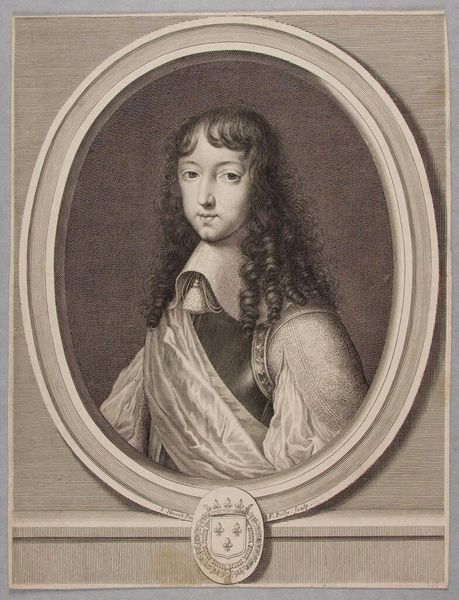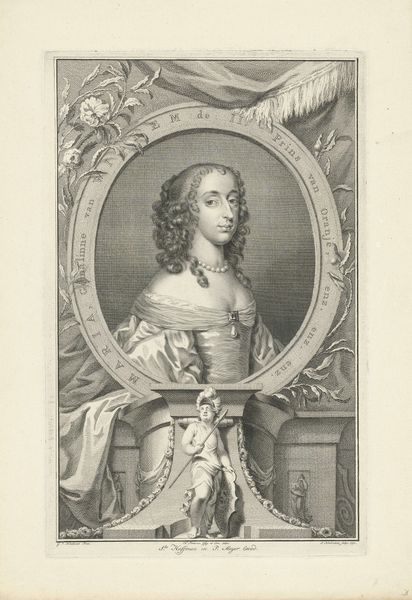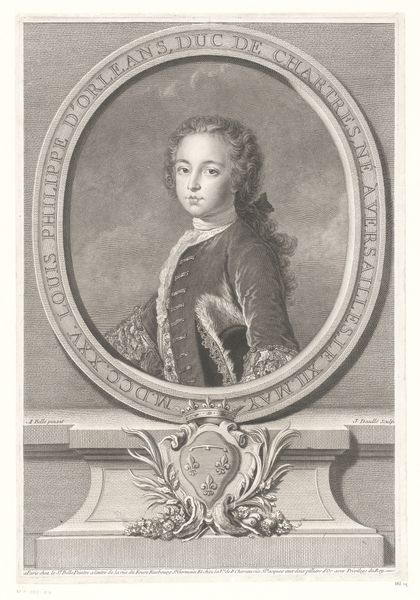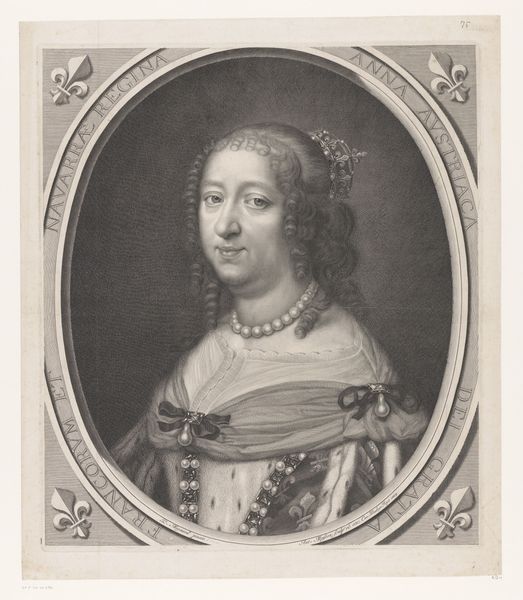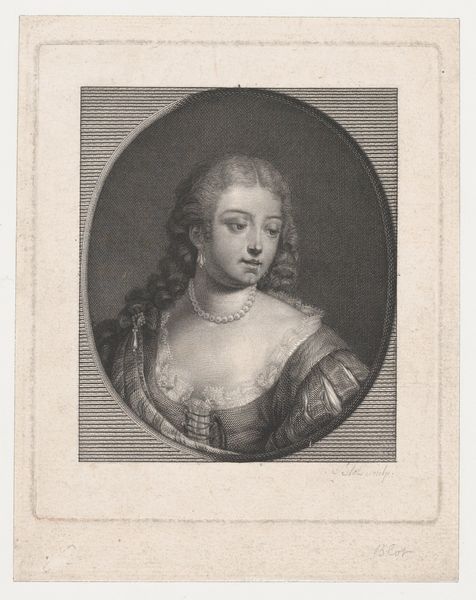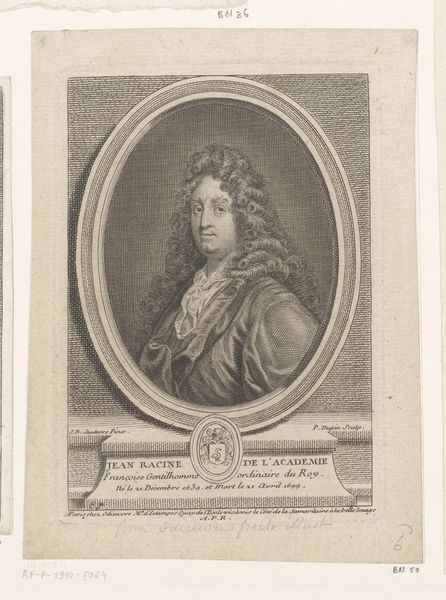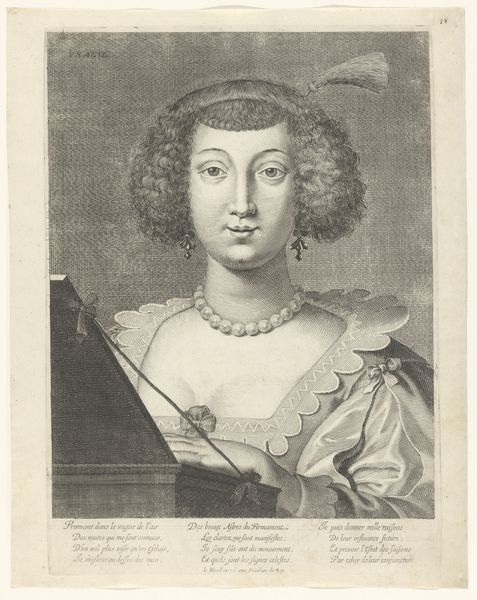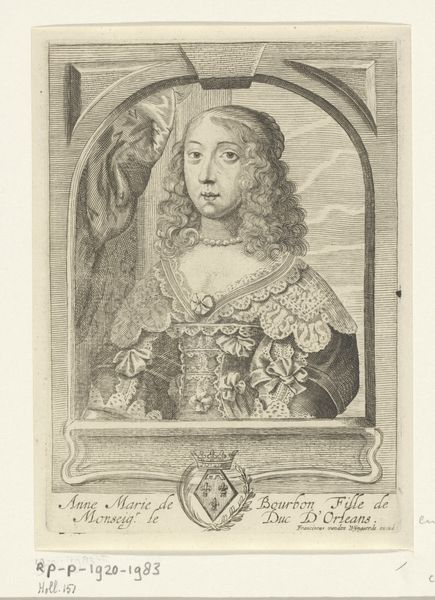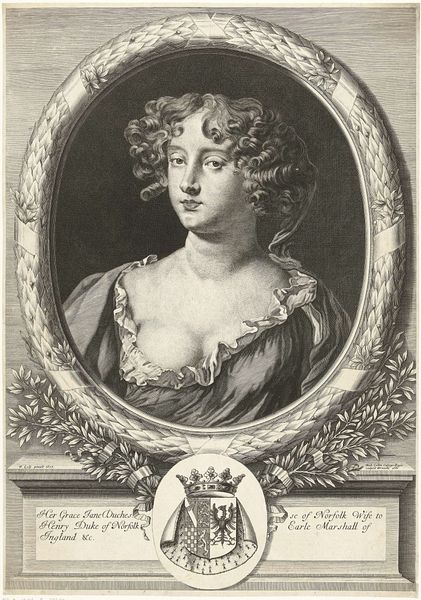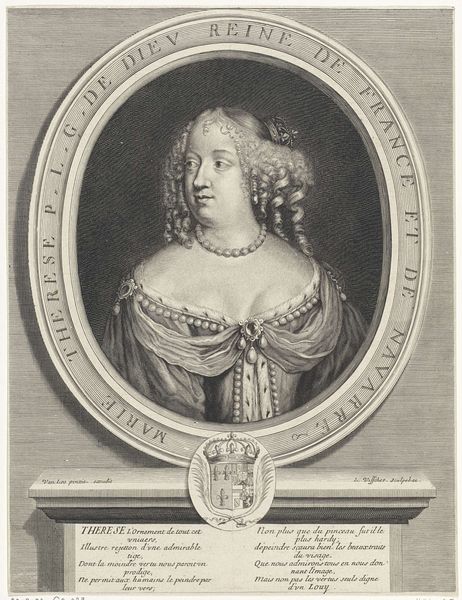
engraving
#
portrait
#
baroque
#
historical photography
#
line
#
history-painting
#
engraving
Dimensions: height 316 mm, width 241 mm
Copyright: Rijks Museum: Open Domain
This is Francois de Poilly’s portrait of Philippe I, Duke of Orléans, made with engraving. Note the fleur-de-lis beneath the portrait. The fleur-de-lis, a stylized lily, has long been a symbol of French royalty, embodying perfection, light, and life, tracing back to antiquity where floral symbols represented purity and divinity. Now, consider its journey: from ancient heraldry to the banners of French kings, it reappears even in modern contexts, from sports teams to the Quebec flag. In each iteration, the fleur-de-lis retains a kernel of its original meaning—a connection to authority, tradition, and cultural identity—yet is perpetually reinterpreted. Think of the collective memory, the shared understanding embedded in this symbol. It evokes a sense of belonging, linking personal identity to a broader narrative of history and culture. In this portrait, the fleur-de-lis isn’t merely a decorative element, but a powerful visual anchor that ties Philippe I to a lineage of power. Its presence elicits an emotional response, a subconscious recognition of enduring cultural forces.
Comments
No comments
Be the first to comment and join the conversation on the ultimate creative platform.
